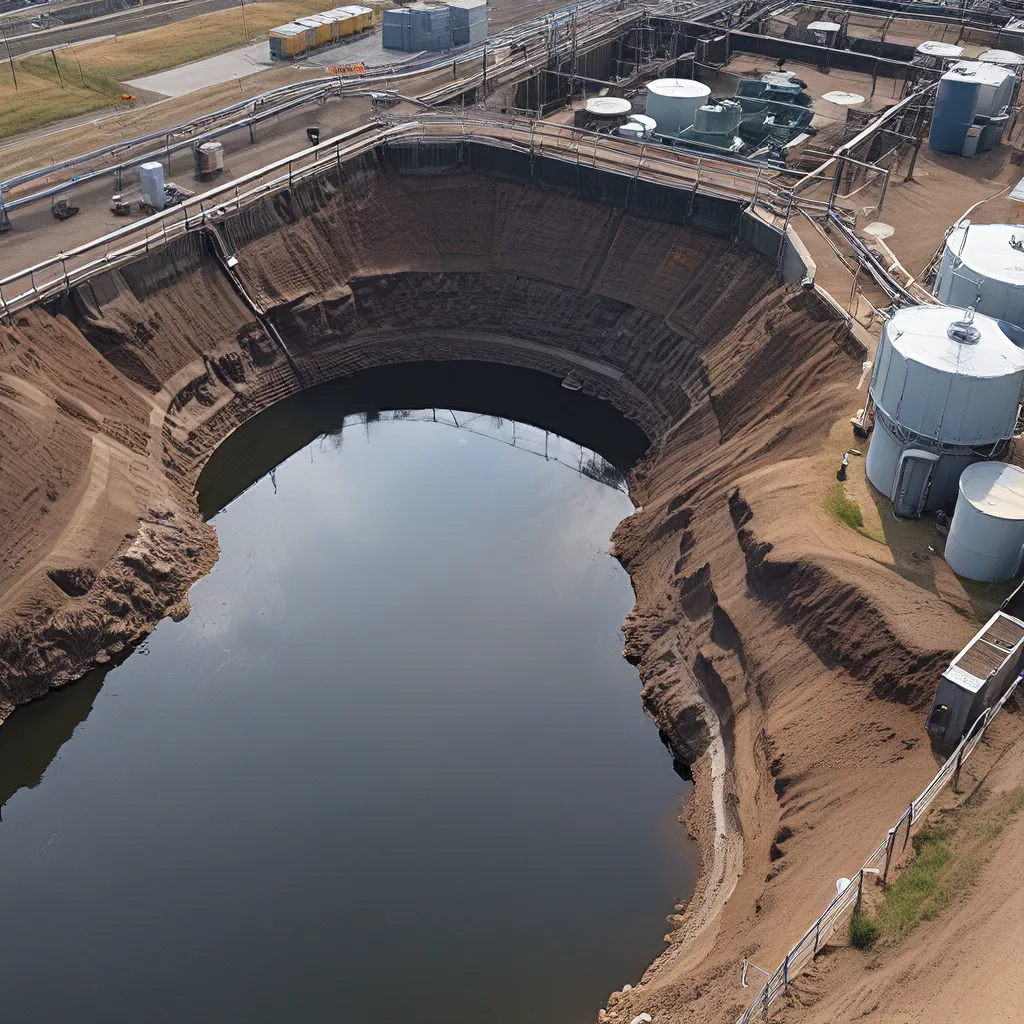
Ah, the wonderful world of wastewater treatment! It’s like a hidden symphony, with pipes, pumps, and tanks orchestrating a delicate dance to purify our dirty water. But you know what they say, “Out of sight, out of mind.” That is, until something goes wrong, and suddenly, we’re all scrambling to understand the intricate web of processes happening behind the scenes.
Well, my friends, fear not! Augmented Reality (AR) is here to shed some light on the murky depths of wastewater treatment. Imagine being able to visualize the inner workings of a treatment plant, like a digital x-ray for your pipes and tanks. With AR, we can transform the way operators, engineers, and even the general public engage with and understand these critical systems.
Unveiling the Magic: How AR Revolutionizes Wastewater Treatment
Wastewater treatment is a complex and multifaceted process, involving a series of physical, chemical, and biological treatments to remove contaminants and ensure the safe discharge of treated water. Traditionally, understanding these processes has been a challenge, requiring extensive training and hands-on experience.
But AR is changing the game. By overlaying digital information and models onto the physical environment, AR provides a window into the invisible world of wastewater treatment. Imagine being able to “see” the flow of water through the system, the levels of dissolved oxygen, or the performance of individual treatment units. This level of visualization can greatly enhance the understanding and optimization of these critical processes.
Empowering Operators: AR-Powered Process Visualization
For wastewater plant operators, AR can be a game-changer. Imagine being able to don a pair of AR glasses and instantly see the real-time performance of your treatment units. No more guessing or relying solely on sensor data – with AR, you can visualize the inner workings of your plant, pinpoint problem areas, and make informed decisions on the spot.
By overlaying digital models and sensor data onto the physical infrastructure, AR enables operators to anticipate and respond to issues more effectively. If a pump starts to malfunction, for example, the AR system can highlight the problem, provide diagnostic information, and even guide the operator through the necessary maintenance steps.
This enhanced visibility and interactivity can lead to significant improvements in process efficiency, energy savings, and regulatory compliance – all while reducing the risk of costly downtime and environmental incidents.
The Power of Collaboration: AR-Enabled Remote Monitoring and Optimization
But the benefits of AR in wastewater treatment don’t stop there. AR can also play a crucial role in remote monitoring and optimization, empowering operators and engineers to collaborate and troubleshoot issues from anywhere.
Imagine a scenario where a plant experiences an unexpected issue. Instead of relying on lengthy phone calls or onsite visits, the operator can simply invite a remote expert to join their AR session. The expert can then visualize the same data and processes, provide real-time guidance, and work together to identify and resolve the problem.
This level of remote collaboration and problem-solving can significantly reduce response times, minimize downtime, and ensure the continued efficient operation of the wastewater treatment plant. Moreover, it can enable experts to provide training and support to operators in remote or underserved areas, promoting the dissemination of best practices and the development of a more skilled workforce.
Bridging the Gap: AR for Public Engagement and Education
But the benefits of AR in wastewater treatment don’t stop at the plant gates. AR can also play a crucial role in educating the public and fostering a deeper understanding of these essential infrastructure systems.
Imagine a future where community members can download an AR app and take a virtual tour of their local wastewater treatment plant. They can see the journey of water through the various treatment stages, understand the role of different processes, and even explore the potential environmental impacts of the facility.
This enhanced public engagement can lead to improved transparency, increased trust, and a more informed citizenry – all of which are vital for the long-term sustainability and support of wastewater infrastructure.
The Road Ahead: Overcoming Challenges and Embracing the Future
Of course, integrating AR into wastewater treatment is not without its challenges. Implementing new technologies, training personnel, and ensuring data security and privacy are all hurdles that must be overcome. Regulatory bodies and industry standards will also need to evolve to accommodate these innovative approaches.
But the potential benefits of AR are simply too compelling to ignore. As sensors, cloud computing, and artificial intelligence continue to advance, the opportunities for AR in wastewater treatment will only grow. Imagine a future where operators can virtually “walk through” their plants, where engineers can simulate process changes in real-time, and where the public can engage with these critical systems in unprecedented ways.
The future of wastewater treatment is a bright one, and AR is poised to play a central role in this transformation. So, let’s embrace this technology, tackle the challenges head-on, and unleash the power of AR to revolutionize the way we manage, understand, and interact with our precious water resources.
Alpha Wastewater is at the forefront of this exciting journey, leveraging the latest advancements in AR and digital technologies to optimize operations, enhance public engagement, and ensure the sustainable management of our wastewater systems. Join us as we dive into this incredible world and unlock the full potential of augmented reality in the wastewater industry.